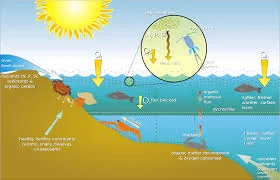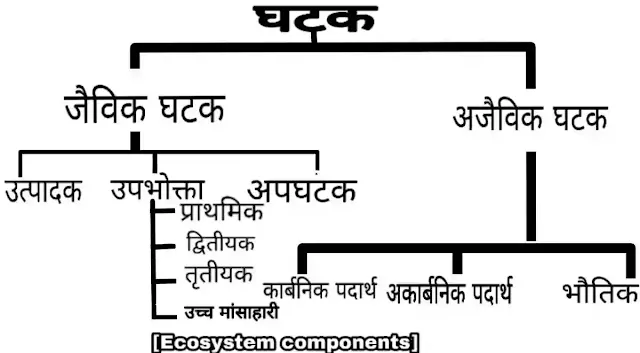 |
| Ecosystem |
What is Ecosystem :
The Ecological system is made up of two words 'ecology' and 'system'. Ecology means - Environment and system means Interactions between its various components. The Ecosystems includes two types of biological and abiotic components.
The term 'Ecosystem' was first used for 'A. G. Towsley 'did in the year 1935. Ecosystems form many food webs, which show the Interdependence and energy flow of these organisms within the Ecosystems.
Components of Ecosystem :
The Biological component is divided into three classes.
(i) Manufacturer:
All those who get simple and Organic Materials and synthesize complex substances, that is, with the help of inorganic materials and make their own food, are called Producers
(ii) Consumer (Ecosystem):
Those who cannot produce food for their own food and depend on other ingredients for food are called consumers. Animals fall under this category. The consumer is divided into four categories.
(a) Primary consumer (Ecosystem):
Primary consumers or herbivores are animals or parasites, which feed directly on producers; Such as cow, goat, deer, rabbit, grasshopper, rat etc.
(b) Secondary Consumer (Ecosystem):
These are carnivorous animals that eat their primary food and get their food. Such as frogs, fish, cats, fox etc.
(c) Tertiary consumers (Ecosystem):
It is the consumers who eat their food from the second class consumers; Like snake, bird etc.
(d) Top Carnivores (Ecosystem) :
These are the top consumers. They eat other categories of consumers, but no one eats them; Such as lion, eagle, tiger etc.
(iii) Decomposer (Ecosystem):
Decomposers are also called decomposers. The components which decompose dead components into ordinary and organic components and derive their energy from this process are called decomposers.
2. Abiotic components (Ecosystem) :
The Abiotic Component is divided into three parts.
(i) Organic Material:
Organic Matter includes organic compounds of dead plants and animals such as proteins, carbohydrates and fats and substances produced by their decomposition; Like urea and hormos.
(ii) Inorganic Material:
Water, various types of salts under Inorganic Matter; Such as, Calcium, Potassium, Magnesium, and Nitrogen etc. and gases; Such as oxygen, carbon dioxide, nitrogen, hydrogen, and ammonia.
(iii) Physical elements:
Physical elements include sunlight, temperature, rainfall etc.

.jpg)

.jpg)

Please don't enter any spam link in the comment box.